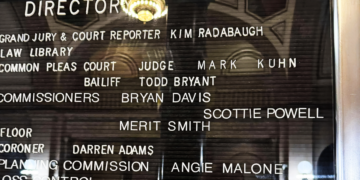Eventually, you need to get rid of your current car for something better. Whether it needs excessive repairs, has significantly high mileage, or has become tired in your eyes, you should trade it in. Still, this may seem easier in theory than in practice. Fortunately, these four easy ways to boost your car’s trade-in value will help increase your return on investment so that you can find a new car in no time.
Maintain It
It doesn’t matter if you’re driving an old automobile or a vehicle fresh off the lot—maintenance is an essential part of a vehicle’s worth. Don’t neglect major or minor repairs. While you may not want to invest lots of money into these repairs, they increase trade-in value. Thus, you can get more for your car than if you were to trade it without them. The better the condition, the more money you’ll see. Determine which repairs will increase its worth and which you’d rather let the dealer manage. The repairs that aren’t too costly but have high returns are the ones worth considering.
Clean It
Additionally, it helps to keep your vehicle looking its best. Clean the exterior and interior to make your car as attractive as possible. Aesthetics are important, and no one wants to buy a car with lots of dings, scratches, or dirt. When cleaning the exterior, use the appropriate car detergent, wax, and polish. You may even consider touch-up paint to cover any minor scratches or rust. There are also easy ways to clean its interior. Vacuum the carpeting, wipe down surfaces, and use upholstery shampoo for cloth or leather. No matter what, doing a deep clean will take lots of time and energy. However, it will be worth the effort when you impress the dealer, even though it’s an older vehicle.
Keep All Service Documentation
One easy way to boost your car’s trade-in value is to keep all service documentation. Dealers need to know your vehicle’s accident and service records. Fluid changes, tire rotations, paint or body repairs, engine repairs, and other services are important because they document all treatments made on the vehicle. Be sure to collect receipts.
Negotiate Its Selling Price
Finally, you need to prove your persuasion skills. After you’ve made all necessary alterations, use your time to negotiate a final selling price. The dealer may try to undersell you. After all, they need to gain a profit even if your car is almost new. Understanding this is part of the negotiation process, and dealers expect you to combat this with another offer. Depending on the condition of your current vehicle, you may or may not have as much bargaining power as expected. Since you’re trading in your vehicle, use this opportunity to negotiate a price on the new automobiles you’re interested in, too. If you feel unsatisfied with the final offer, go to other dealerships. You’re not under any obligation to trade in your vehicle to one dealer, so use this opportunity to shop around local dealerships for the best offer available.





















































































